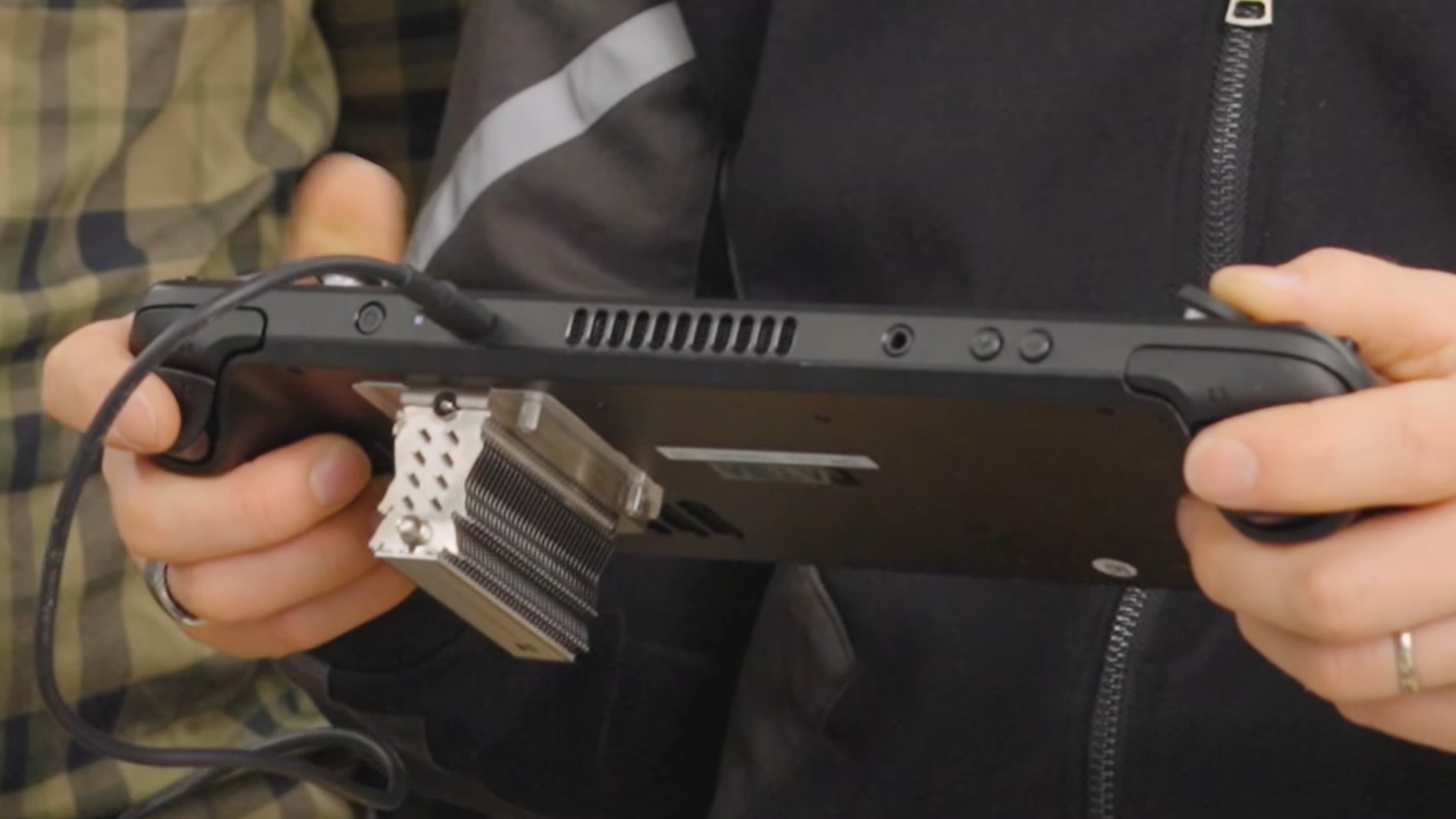(Image source: YouTube/Linus Tech Tips)
The Steam Deck has everything that makes a good handheld: great display, fantastic controls and an almost endless wealth of games thanks to the well over fifty thousand titles in the Steam library. You can find out why else Valve’s PC handheld convinces us in our detailed test:
Steam Deck im Test:
Every PC gamer should have tried this hardware
But the Steam Deck has a very crucial catch: the loud fan noise. Well, actually there are two catches, but we’ll ignore the sparse availability here. The fan starts spinning as soon as the AMD APU is really challenged by a game. Although it doesn’t really howl, but rather swells constantly and then buzzes, many players and testers are still very bothered by it.
Linus Tech Tips puts his own hands on the Steam Deck
YouTube star Linus Sebastian has now taken on this personally and modified the Steam Deck in such a way that – apart from the game sound – there is hardly a peep anymore. But you shouldn’t imitate it, unless you can touch it hotly:
link to YouTube content
Actually, Linus and his colleague did nothing else than attach an additional, oversized cooler. What sounds simple in theory, however, in practice required the highest level of precision during production – including a CNC milling machine. A correspondingly large hole had to be cut into the plastic cover on the back of the Steam Deck behind the AMD APU.
The results are convincing
The first test setup reduced the fan speed by around 500 RPM from 5,750 to 5,284 RPM, i.e. a good ten percent. Because the AMD APU was also able to keep the clock rate more stable and did not have to throttle, the performance even increased by two FPS (around five percent). With an additional fan on the passive cooler that is barely or not at all audible, the speed could even be throttled to around 2,700 RPM in the second attempt.
It cools down better with an additional fan.
To put that in perspective: Anything below 3,000 rpm is practically only audible if the sound on the steam deck is completely deactivated and we put our ears directly to the air vents.
Small disadvantage: The extra fan is supplied with external power, but could probably also be wired internally without much effort. In the GameStar podcast, we put the Steam Deck to the test again – listen:
link to Podcast Content
Imitation not recommended
However, you should not rebuild the construction. It goes without saying that you will certainly lose any warranty claims if you do this. Also, the heatsink on the back of the Steam Deck gets very warm to hot, even with the additional fan. Quite apart from the fact that the PC handheld can then no longer be placed with the screen facing up.
Couldn’t Valve just construct something similar?
Probably nothing that proves to be practical. At least not at the moment. Should there be further iterations of the Steam Deck, which statements by Valve boss Gabe Newell suggest, it is conceivable that a more powerful and, above all, more energy-efficient APU will have the same performance as the current model, but will produce far less waste heat, which then maybe really can be cooled purely passively or with a low and thus practically silent rotating fan.
How do you like the experiment? And do you already have a Steam Deck at home? Write us that in the comments!
Table of Contents











